Purified Cornel Iridoid Glycosides Attenuated Oxidative Stress Induced by Cerebral Ischemia-Reperfusion Injury via Morroniside and Loganin Targeting Nrf2/NQO-1/HO-1 Signaling Pathway
- PMID: 40801636
- PMCID: PMC12345668
- DOI: 10.3390/cells14151205
Purified Cornel Iridoid Glycosides Attenuated Oxidative Stress Induced by Cerebral Ischemia-Reperfusion Injury via Morroniside and Loganin Targeting Nrf2/NQO-1/HO-1 Signaling Pathway
Abstract
Oxidative stress significantly contributes to the exacerbation of brain damage during cerebral ischemia-reperfusion injury (CIR/I). In our previous study, purified cornel iridoid glycoside (PCIG), consisting of morroniside (MOR) and loganin (LOG), showed neuroprotective effects against CIR/I. To further explore the antioxidative effects and underlying molecular mechanisms, we applied PCIG, MOR, and LOG to rats injured by middle cerebral artery occlusion/reperfusion (MCAO/R) as well as H2O2-stimulated PC12 cells. Additionally, the molecular docking analysis was performed to assess the interaction between the PCIG constituents and Kelch-like ECH-associated protein 1 (Keap1). The results showed that the treated rats experienced fewer neurological deficits, reduced lesion volumes, and lower cell death accompanied by decreased levels of malondialdehyde (MDA) and protein carbonyl, as well as increased activities of superoxide dismutase (SOD) and glutathione peroxidase (GSH-Px). In H2O2-stimulated PC12 cells, the treatments decreased reactive oxygen species (ROS) production, mitigated mitochondrial dysfunction, and inhibited mitochondrial-dependent apoptosis. Moreover, the treatments facilitated Nuclear factor (erythroid-derived 2)-like 2 (Nrf2) translocation into the nucleus and selectively increased the expression of NAD(P)H quinone oxidoreductase 1 (NQO-1) and heme oxygenase 1 (HO-1) through MOR and LOG, respectively. Both MOR and LOG demonstrated strong binding affinity to Keap1. These findings suggested that PCIG, rather than any individual components, might serve as a valuable treatment for ischemic stroke by activating the Nrf2/NQO-1 and Nrf2/HO-1 signaling pathway.
Keywords: Nrf2 signaling pathway; cerebral ischemia-reperfusion injury; loganin; morroniside; oxidative stress; purified cornel iridoid glycosides.
Conflict of interest statement
The authors declare no conflicts of interest.
Figures


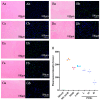


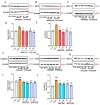
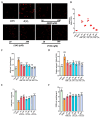
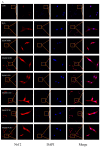

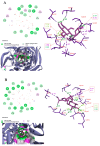

Similar articles
-
The cornel Iridoid glycoside attenuated brain edema of the cerebral ischemia/reperfusion rats by modulating the polarized aquaporin 4.Fitoterapia. 2024 Sep;177:106098. doi: 10.1016/j.fitote.2024.106098. Epub 2024 Jun 29. Fitoterapia. 2024. PMID: 38950636
-
Knockdown of ATF3 Alleviates Ischemic Stroke and Inhibits Ferroptosis via Activating the Keap1/Nrf2/HO- 1 Pathway.Mol Neurobiol. 2025 Sep;62(9):11224-11237. doi: 10.1007/s12035-025-04966-7. Epub 2025 Apr 24. Mol Neurobiol. 2025. PMID: 40272768
-
Cornel iridoid glycosides exerted neuroprotective effects against cerebral ischemia/reperfusion injury in rats via inhibiting TLR4/MyD88/NF-κB pathway.Eur J Pharmacol. 2025 Aug 15;1001:177742. doi: 10.1016/j.ejphar.2025.177742. Epub 2025 May 19. Eur J Pharmacol. 2025. PMID: 40398794
-
Metal profiling in coronary ischemia-reperfusion injury: Implications for KEAP1/NRF2 regulated redox signaling.Free Radic Biol Med. 2024 Jan;210:158-171. doi: 10.1016/j.freeradbiomed.2023.11.013. Epub 2023 Nov 19. Free Radic Biol Med. 2024. PMID: 37989446 Review.
-
FAM3A: a novel mitochondrial protein for the treatment of ischemic diseases.Cell Cycle. 2025 Mar-Apr;24(5-8):71-85. doi: 10.1080/15384101.2025.2527777. Epub 2025 Jul 3. Cell Cycle. 2025. PMID: 40611502 Review.
References
-
- Li Z., Zhang D. Research progress on related mechanisms of cerebral ischemia-reperfusion injury. Acta Neuropharmacol. 2020;10:60–63.
MeSH terms
Substances
Grants and funding
LinkOut - more resources
Full Text Sources
Research Materials
Miscellaneous

